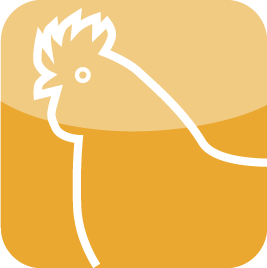Category: Fish
By: Erik Sulanke, Jörg Berkenhagen
The sea at heart: Understanding family-owned German brown shrimp fishery
The brown shrimp fishery is the most valuable coastal fishery in Germany. Family-owned beam trawlers under 20m length operating in the shallow Wadden Sea account for the vast majority of catches. We discussed the economic structure of a brown shrimp beam trawler with captains and managers. The focus group created a full-cost account of such a vessel according to the typical farm approach of agri benchmark Fish. Our results depict the independent and profitable character of this fishery, yet they also show its vulnerability for price and catch fluctuations.
The typical German brown shrimp beam trawler DEU-CSH-34 (the number 34 stands for the gross tonnage of the vessel, which indicates its catch capacity) was created in a focus group meeting with four experienced shrimper skippers and one state-level fisheries advisor specialized in the brown shrimp fishery. After settling the technical parameters of the vessel, theoretical catch-revenue and cost accounts were calculated for the previous year (2019), which was a particularly bad year for the shrimp fishery, and the rather typical and more profitable business year 2014.
Several biological aspects of its target species heavily influence the brown shrimp fishery. The brown shrimp (Crangon crangon) is a short-lived species with high annual mortality rates that reproduces almost year-round. Its stock size and therefore the size of catches is unforeseeable and not managed by a Total Allowable Catch (TAC) like other EU fisheries. This independence from quota settings is to some extent outbalanced by a bilateral oligopoly in the value chain of the product.
Two wholesalers buy all landings of economic relevance. They fill their stocks, when catches are high and prices low. This can lead to a lasting decline of the price level. In 2019, low prices coincided with meagre catches and the typical German beam trawler could not cover its cash cost in this year, although fishing effort was reduced. The cash cost mainly comprise fixed cost like insurance, membership and vessel maintenance, wages and fuel. The wage of the deck hand is paid in a traditional lay-system, i.e. a 17 percent share of the catch revenue. In the rather typical year 2014, the brown shrimp trawler could cover its cash-, depreciation- and opportunity costs and generate a long-term profit of about 19,000 €.
Fisheries are characterized by strong fluctuations in catches and profits and the German brown shrimp beam trawlers are no exception to this. Furthermore, they are an important part of coastal communities and culture and fishermen take pride in their profession. When interpreting datasets like this, we should keep the immaterial and non-calculable benefits of leading a ship, being at one’s own command and keeping a family tradition alive in mind, which were emotionally emphasized by the captains in the focus group.
The typical German brown shrimp beam trawler designed in the focus group is a disaggregated and easily updatable full-cost account data set with many possible applications in socio-economic analyses and modelling of this fishery. It is currently in use to evaluate means taken to mitigate the impacts of the Covid-19 crisis. For further information please visit the agri benchmark Fish website (![]() http://www.agribenchmark.org/fish.html)
http://www.agribenchmark.org/fish.html)
or contact the corresponding author.
Corresponding author:
Erik Sulanke
Tel: +49 471 94460 386







 erik.sulanke@thuenen.de
erik.sulanke@thuenen.de